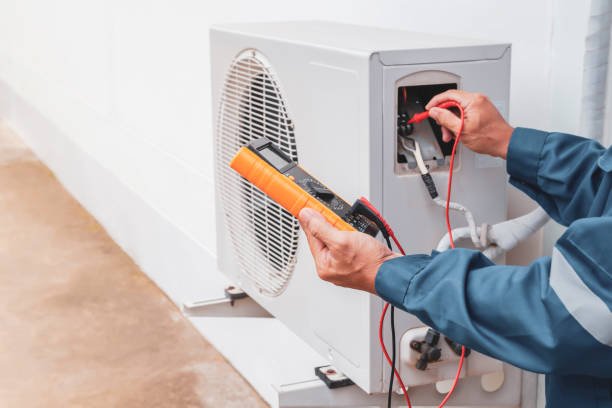For any commercial building, comfort and functionality go hand in hand. People expect to walk into an office, store, or public building and feel comfortable. Most of the time, they never think twice about the air they breathe or the temperature inside. That is, until something goes wrong.
HVAC systems (heating, ventilation, and air conditioning) are among the most important yet overlooked components of any commercial space. When they function well, everything feels normal. But when they fail, operations are disrupted, customers leave early, and employees struggle to stay focused.
The key to avoiding these issues? Regular HVAC maintenance.
What Is HVAC Maintenance Really About?
At its core, HVAC maintenance means regularly checking, cleaning, and fine-tuning your system to make sure it’s running the way it should. It includes:
- Inspecting and replacing air filters
- Cleaning evaporator and condenser coils
- Checking thermostat calibration
- Lubricating moving parts
- Testing system controls
- Ensuring refrigerant levels are correct
- Inspecting ductwork for leaks or blockages
These aren’t just technical chores. They are vital actions that protect your equipment, lower energy costs, and reduce the risk of sudden breakdowns.
The Hidden Costs of Neglect
Ignoring HVAC maintenance may seem harmless in the short term. But over time, dust accumulates, filters clog, and parts wear down. This forces the system to work harder to deliver the same results, which means higher energy bills and shorter system lifespan.
An inefficient HVAC system draws more power and runs longer than necessary. That translates to rising monthly bills. What’s more, neglected systems are more likely to break down at the worst times – in the middle of a summer heatwave or a freezing winter morning.
Emergency repairs cost far more than preventive maintenance. And if a breakdown causes your business to close for even a day, the loss in revenue can be significant.
The Benefits of Regular Maintenance
- Improved Efficiency: Clean coils, clear filters, and calibrated systems use less energy. Maintenance keeps everything running as designed, minimizing waste.
- Better Air Quality: Clean air filters and ducts reduce dust, allergens, and airborne pollutants. This is especially important in buildings like schools, hospitals, or offices where many people spend long hours indoors.
- Extended Equipment Life: A well-maintained HVAC system can last 15 to 20 years. Neglect can cut that in half.
- Fewer Breakdowns: Routine inspections help spot issues early. It’s easier and cheaper to replace a worn belt during a check-up than it is to replace a burned-out motor after it fails.
- Predictable Budgeting: Scheduled maintenance helps avoid surprise expenses. It allows businesses to budget more accurately for repairs and replacements.
A Seasonal Approach to Maintenance
In a place like Kansas, where temperatures swing from scorching summers to freezing winters, preparing your HVAC system for each season is essential.
Spring/Summer Maintenance Tasks:
- Test and calibrate the air conditioning unit
- Clean or replace air filters
- Inspect condenser coils
- Check refrigerant levels
- Ensure the thermostat works correctly
Fall/Winter Maintenance Tasks:
- Inspect the furnace and heat exchangers
- Test carbon monoxide detectors
- Lubricate moving parts
- Replace filters again (yes, they’re that important)
- Clean air vents and ductwork
By scheduling maintenance at the start of each season, businesses avoid last-minute emergencies and keep comfort levels consistent.
The Role of Smart Technology in HVAC Maintenance
Many modern HVAC systems come with smart thermostats, sensors, and performance-tracking apps. These tools make it easier to identify inefficiencies and spot potential problems before they turn into failures.
For example, a smart sensor might detect a drop in airflow, signaling a clogged filter. Or it may notice the system is running longer than usual to reach a set temperature, which could point to refrigerant issues. These small alerts help building managers take quick action.
Digital maintenance logs and automated scheduling tools also make it easier to track service history, warranty periods, and part replacements.
Why Maintenance Plans Matter
Many businesses choose to partner with HVAC professionals on a service agreement or maintenance plan. These plans often include scheduled visits, priority service, and discounted rates for repairs. They also shift the responsibility of remembering when to service the system onto the provider.
A maintenance plan ensures your system gets consistent care without adding extra tasks to your team’s workload. Over time, that reliability pays off in better system performance and fewer surprises.
Tailored Maintenance for Different Commercial Buildings
Every commercial building is unique. Office complexes, warehouses, retail stores, and medical centers all have different HVAC needs based on usage, square footage, and occupant load.
An experienced technician will assess your specific building layout, usage patterns, and equipment type before creating a maintenance schedule. This personalized approach ensures the system supports your business’s real-world needs instead of following a one-size-fits-all checklist.
Protecting Your Investment
Commercial HVAC systems are a major investment, often costing tens of thousands of dollars. Like any investment, they need protection. You wouldn’t skip oil changes on a car you rely on. The same logic applies to your building’s HVAC.
Routine maintenance not only protects the physical system but also safeguards your overall business operation. A healthy HVAC system contributes to a smooth, efficient, and welcoming environment.
Conclusion
Good air doesn’t just happen. It’s the result of steady, smart maintenance that keeps systems running efficiently and comfortably year-round. Businesses that stay ahead with scheduled check-ups and expert care are less likely to face costly breakdowns or customer discomfort. Investing in Commercial HVAC Maintenance Services in Kansas helps you protect your property, your people, and your bottom line.






